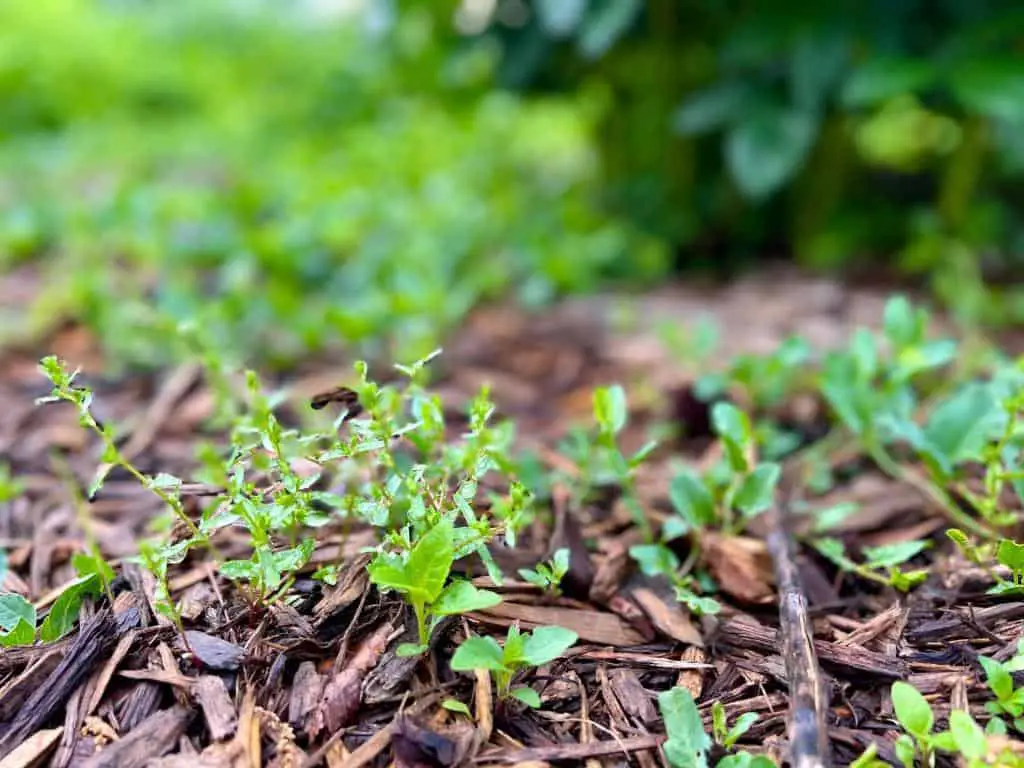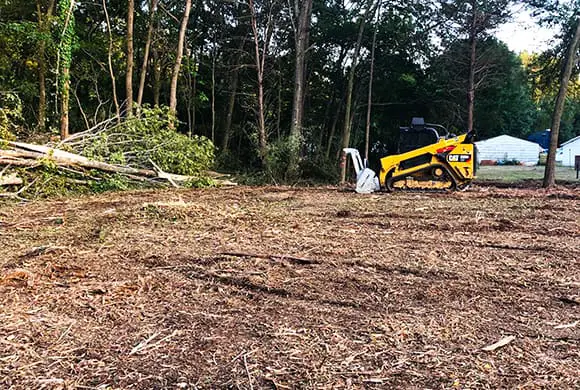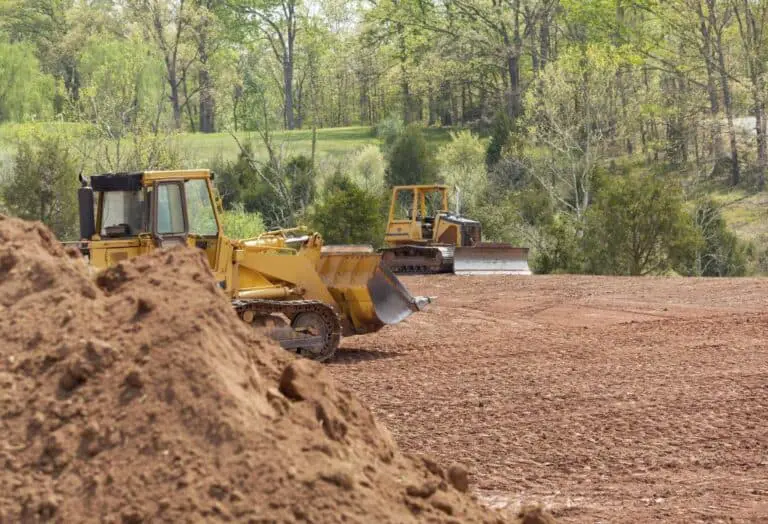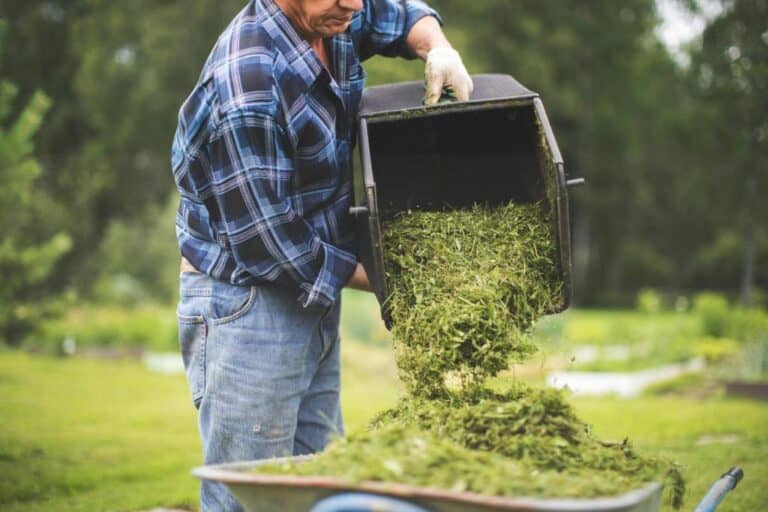Will Mulch Kill Existing Weeds? Benefit of Covering Weeds with Mulch

We’ve all been there: you spend hours pulling weeds out of your garden or landscaping, only to have them sprout up again a few weeks later. It can feel like pulling weeds is a waste of time and an endless battle, but what if there was a solution that could make your life easier?
Enter mulch, a popular tool for suppressing weed growth in gardens and landscaping projects. But the question remains: will mulch kill existing weeds? Can you simply cover them with a layer of mulch and forget about them?
Mulch can prevent weed growth by suffocating them and keeping adequate sunlight from reaching them, as well as preventing weed seeds from sprouting
In this article, we’ll explore the effectiveness of using mulch as a weed control method and provide some tips for using it to create a healthy and vibrant landscape. So, grab your gardening gloves and let’s dive in!
Understanding Mulch and its Benefits
Mulch is a layer of material that is spread on the soil surface to protect, enrich, and beautify garden beds, landscapes, and tree bases. It is a natural or man-made substance that can keep water in the soil, control temperature, stop weeds from growing, stop soil from washing away, and improve soil fertility. Mulch can also serve as a habitat for beneficial insects, worms, and microbes that play a vital role in the ecosystem.
One of the primary benefits of mulch is that it can conserve water by reducing evaporation and runoff. When applied correctly, mulch can keep the soil moist for longer periods, which is particularly important during droughts or hot summer days. Mulch can also insulate the soil from extreme temperature fluctuations, which can damage plant roots and affect their growth and development.
Another significant benefit of mulch is that it can prevent weeds from germinating and growing. Mulch creates a physical barrier between the soil and sunlight, which is essential for weed seeds to sprout and establish. Furthermore, some types of mulch, such as wood chips, pine needles, or straw, can release natural herbicides that inhibit weed growth—mulch can kill weeds. By reducing the competition for nutrients, water, and sunlight, mulch can help plants grow healthier and stronger.
Mulch can also improve the health and fertility of the soil. As mulch breaks down, it can release nutrients that plants need to grow, such as nitrogen, phosphorus, and potassium. Mulch can also improve the structure, air flow, and drainage of the soil, which are all important for root growth and nutrient uptake. Also, mulch can help good microorganisms like bacteria and fungi grow. These organisms break down organic matter and make a soil ecosystem that is rich and diverse.
Types of Mulch and their Characteristics
There are so many types of mulch available that it can be difficult to know which one to choose. We will explore the different types of mulch and their characteristics.
1. Organic Mulch
The first type of mulch is organic mulch, which is made from natural materials such as leaves, straw, grass clippings, and wood chips. Organic mulch is an excellent choice for those who want an eco-friendly option as it breaks down over time, adding valuable nutrients to the soil. As the organic mulch decomposes, it also helps to improve soil structure and fertility.
2. Inorganic Mulch
Another type of mulch is inorganic mulch, which is made from materials such as plastic, stones, or rubber. Inorganic mulch is an excellent choice for those who want a long-lasting option that doesn’t break down over time. Inorganic mulch is also excellent for areas where erosion is a problem, as it doesn’t get washed away like organic mulch. However, it doesn’t provide the same benefits for soil structure and fertility as organic mulch does.
The Impact of Weeds on Your Garden
Weeds are unwanted plants that can grow rapidly and reproduce prolifically under favorable conditions. They can be annuals, biennials, or perennials and spread through seeds, runners, or rhizomes.
Weeds can survive in a wide range of environments, from dry and sunny to moist and shady, and can thrive in poor or compacted soils. They can also grow in different ways, like with tilling, mulching, or watering, and they can beat out desirable plants by taking advantage of their weaknesses.
Weeds can be a significant problem in any garden or landscape. Not only are they unsightly, but they can also compete with desirable plants for nutrients, water, and sunlight, causing stunted growth and reduced yields.
Weeds can also harbor pests and diseases that can spread to other plants, leading to further damage and losses. So, weed control is an important part of gardening, and knowing how weeds affect your garden can help you take the right steps to stop them or keep them under control.
Conventional Methods of Weeds Control
Weeds can be a real nuisance in any garden or landscaping project. They compete with desirable plants for sunlight, water, and nutrients, and can quickly take over if left unchecked. While mulch is a popular and effective tool for suppressing weed growth, there are also several conventional methods of weed control that can be used in conjunction with or instead of mulch.
1. Manual Removal
One of the most common methods of weed control is manual removal. This involves physically pulling weeds out of the ground by hand or using a tool such as a hoe or cultivator. Even though this method can work, it can take a lot of time and work, especially in bigger gardens or landscaping projects.
2. Chemical Herbicides
Chemical herbicides are another commonly used method of weed control. These products are designed to kill weeds by targeting their specific growth mechanisms. While chemical herbicides can be effective, they can also be harmful to the environment and human health if used improperly. It’s important to follow all instructions and safety guidelines when using these products.
3. Landscape Fabric
Another option for weed control is using landscape fabric. This material is placed over the soil and cuts off sunlight to weeds, preventing them from growing. While landscape fabric can be effective in preventing new weed growth, it may not be as effective in killing existing weeds and can also be costly and difficult to install.
4. Flame Weeding
Flame weeding is a newer method of weed control that involves using a propane torch to burn weeds. This method is effective in killing weeds on contact and can be a quick and easy solution, but it can also be dangerous if not done properly.
Each method has its own unique benefits and drawbacks, and the best solution will depend on the specific needs of your garden or landscaping project. With the right combination of tools and techniques, however, you can create a landscape that is healthy, vibrant, and free from unwanted weeds.
Covering Weeds with Mulch
Covering weeds with mulch can be an effective and eco-friendly way to control their growth and spread in your garden or landscape. Mulch can create a physical barrier between the weed seeds and the soil surface, preventing them from getting enough light, warmth, and moisture to germinate and establish. Mulch can also stop water, animals, or people from blowing or carrying the weed seeds to other areas.
Below are several steps to take when implementing mulching to cover weeds:
- When using mulch to cover weeds, it is important to choose the right type of mulch and apply it correctly. Organic mulches such as straw, leaves, grass clippings, and wood chips can be effective in suppressing weed growth while also adding nutrients and improving soil health. Inorganic mulches such as gravel, stones, and plastic sheets can also prevent weed growth but may not have the same benefits as organic mulches.
- To use mulch as a weed barrier, you should first remove any existing weeds from the area as much as possible. To loosen the soil and remove the roots, you can do this manually by hand pulling or using a hoe or rake. You can also use a weed killer or herbicide to kill the weeds in mulch before you put mulch over weeds, but be sure to follow the instructions carefully and avoid harming desirable plants.
- Once the weeds are removed or killed, you may be wondering what you should put down before mulching. You can apply a layer of mulch about 2-3 inches thick on top of the soil surface. Be sure to spread the mulch evenly and avoid piling it up against the stems or trunks of plants, as this can create a damp environment that promotes rot and disease.
- You should also leave a small space around the base of each plant to allow for air circulation and prevent waterlogging.
Covering weeds with mulch can offer several benefits beyond weed control. Mulch can help keep the soil moist, control the temperature of the soil, stop soil erosion, and improve the structure and fertility of the soil. Mulch can also provide a habitat for beneficial insects, earthworms, and microbes that can help break down organic matter and enrich the soil.
Will Plants Grow Through Mulch?
When mulch is applied correctly, typically 4 to 6 inches deep, it provides an effective layer of insulation for the soil, helping to regulate temperature and prevent moisture loss. Most perennial plants are able to push through this layer of mulch in the spring as they begin their growth cycle. The mulch provides a natural barrier against weeds as well as helping to retain moisture in the soil and prevent erosion.
However, there are some cases where plants may struggle to push through a layer of mulch. For example, if the mulch is too deep or too tightly packed, it may be difficult for young or newly planted perennials to emerge in the spring. In this case, it may be necessary to clear some of the mulch away from the plants in order to give them room to grow.
It’s also worth noting that some plants are more resilient than others when it comes to growing through mulch. For example, hardy groundcovers such as creeping thyme or sedum are often able to push through even thick layers of mulch, while more delicate plants may struggle.





